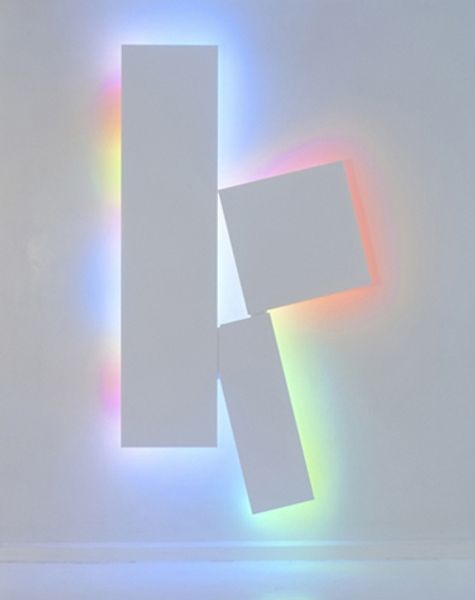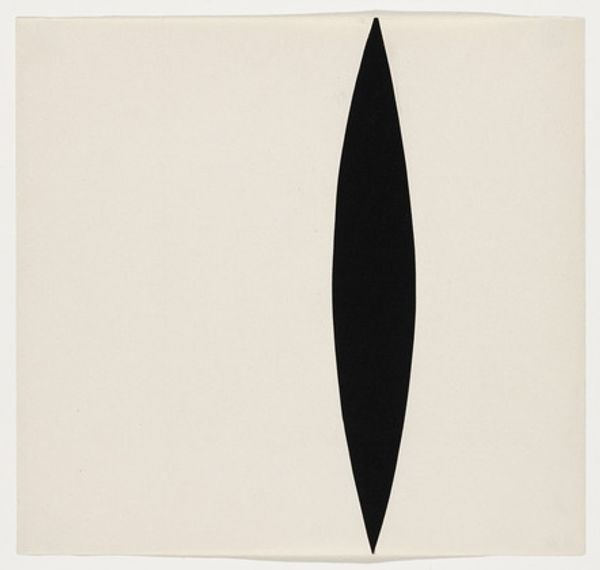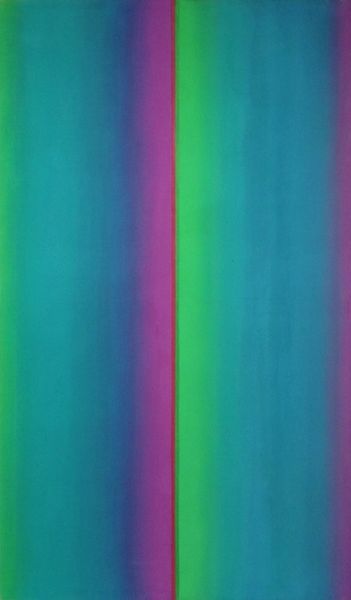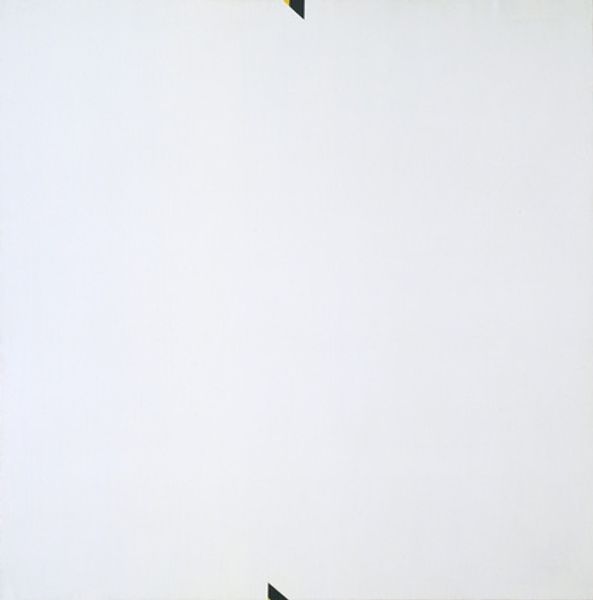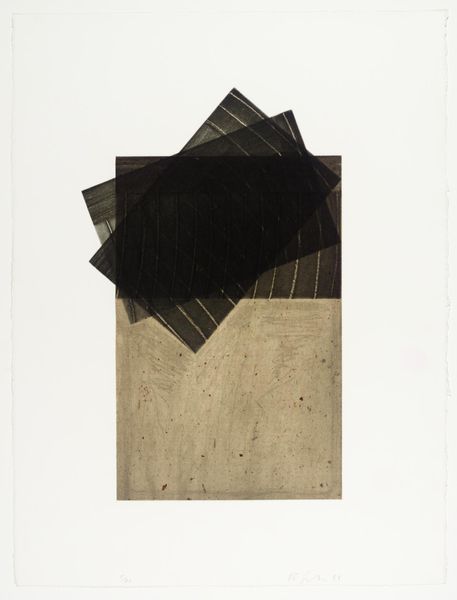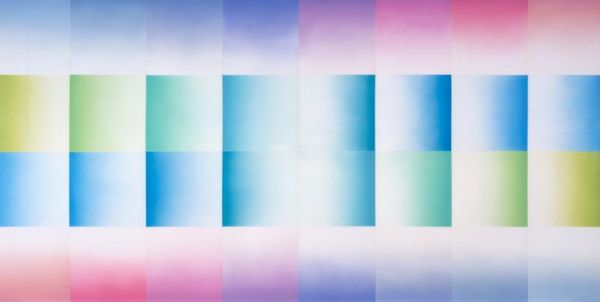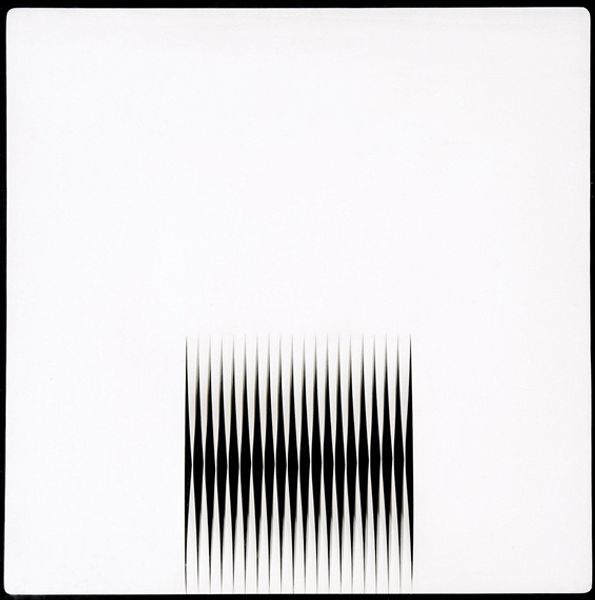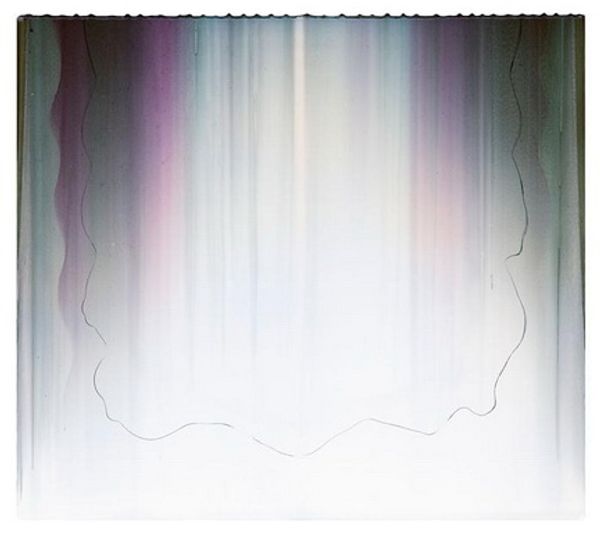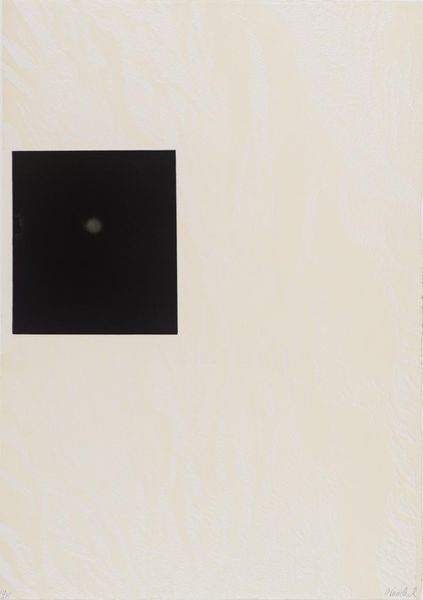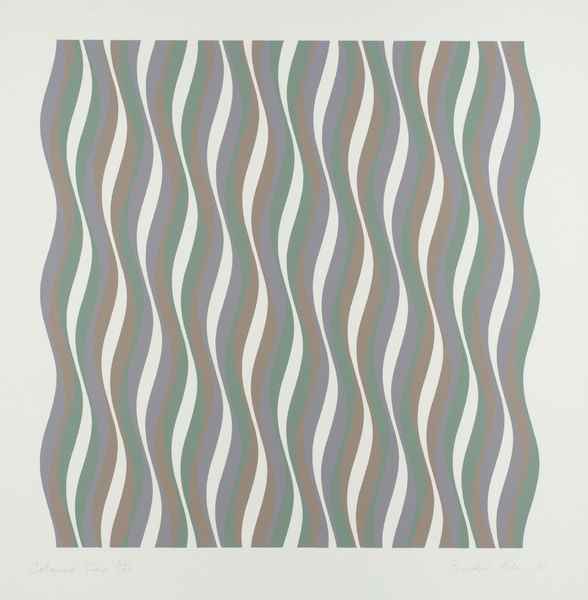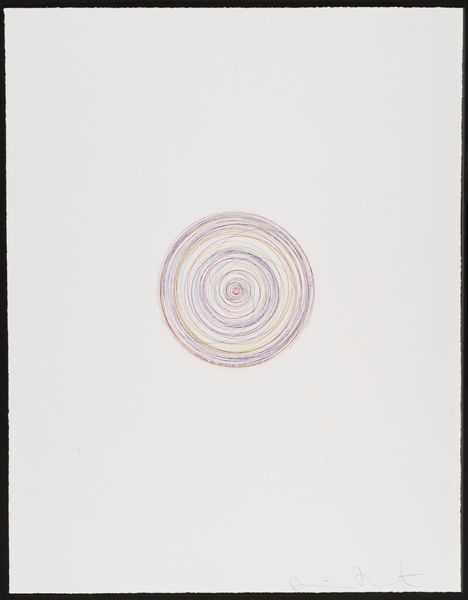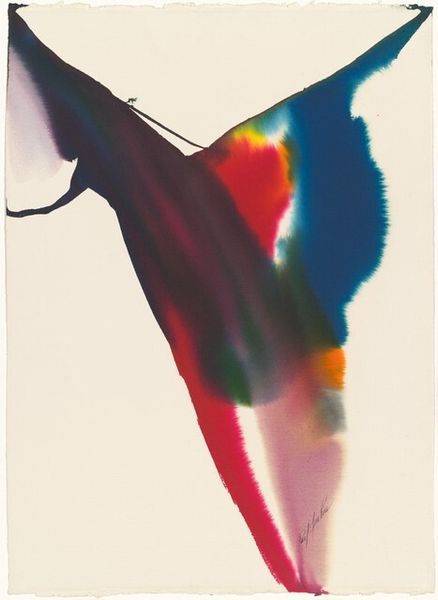
drawing
#
drawing
#
natural stone pattern
#
abstract shape
#
natural shape and form
#
op art
#
repetition of white
#
carved into stone
#
minimal pattern
#
organic pattern
#
simple pattern
#
repetition of white colour
Dimensions: sheet: 29.21 × 28.58 cm (11 1/2 × 11 1/4 in.)
Copyright: National Gallery of Art: CC0 1.0
Editor: This is Jeffrey Simmons' "Switch" created in 2003, made using drawing as its medium. I'm struck by how much empty space there is compared to the colored part; it feels quite lonely. What do you see in it? Curator: I see a compelling meditation on the role of minimalist aesthetics within institutional settings. The drawing’s simplicity, the stark contrast between the vibrant central motif and the vast emptiness, asks us to consider how the context of display shapes our interpretation. Do you think the "switch" suggests something about control? Editor: Possibly? Control, or maybe focus, the way light is focused? Like a beam. What do you mean by ‘institutional settings’ affecting the reading? Curator: Well, imagine this piece in a gallery known for its avant-garde or political art. Wouldn't it invite questions about power structures or perhaps the visibility of marginalized groups? A single, bright element in a void; who controls that switch, and for whose benefit? Think about museums, galleries, the very architecture that frames our engagement. Editor: I guess it's hard not to bring those ideas into it. I mean, just having it in a gallery implies certain...gatekeepers, right? Who decided it was worth showing? Curator: Precisely! The choice to display, to legitimize a work, becomes a political act in itself. How do you think the drawing's abstract nature affects its potential for social commentary? Editor: Because it isn't overt, it could stand in for lots of different ‘switches’ - it is much less direct than a portrait of a politician, for example. That’s interesting! I hadn’t thought of all of this when I just saw the colors. Curator: And that's the power of art history - to unpack those layers and understand the conversations happening beyond the surface. Thanks for pointing it out; I am always interested in discussing new meanings about the artwork and how our positionality might change our minds!
Comments
No comments
Be the first to comment and join the conversation on the ultimate creative platform.
